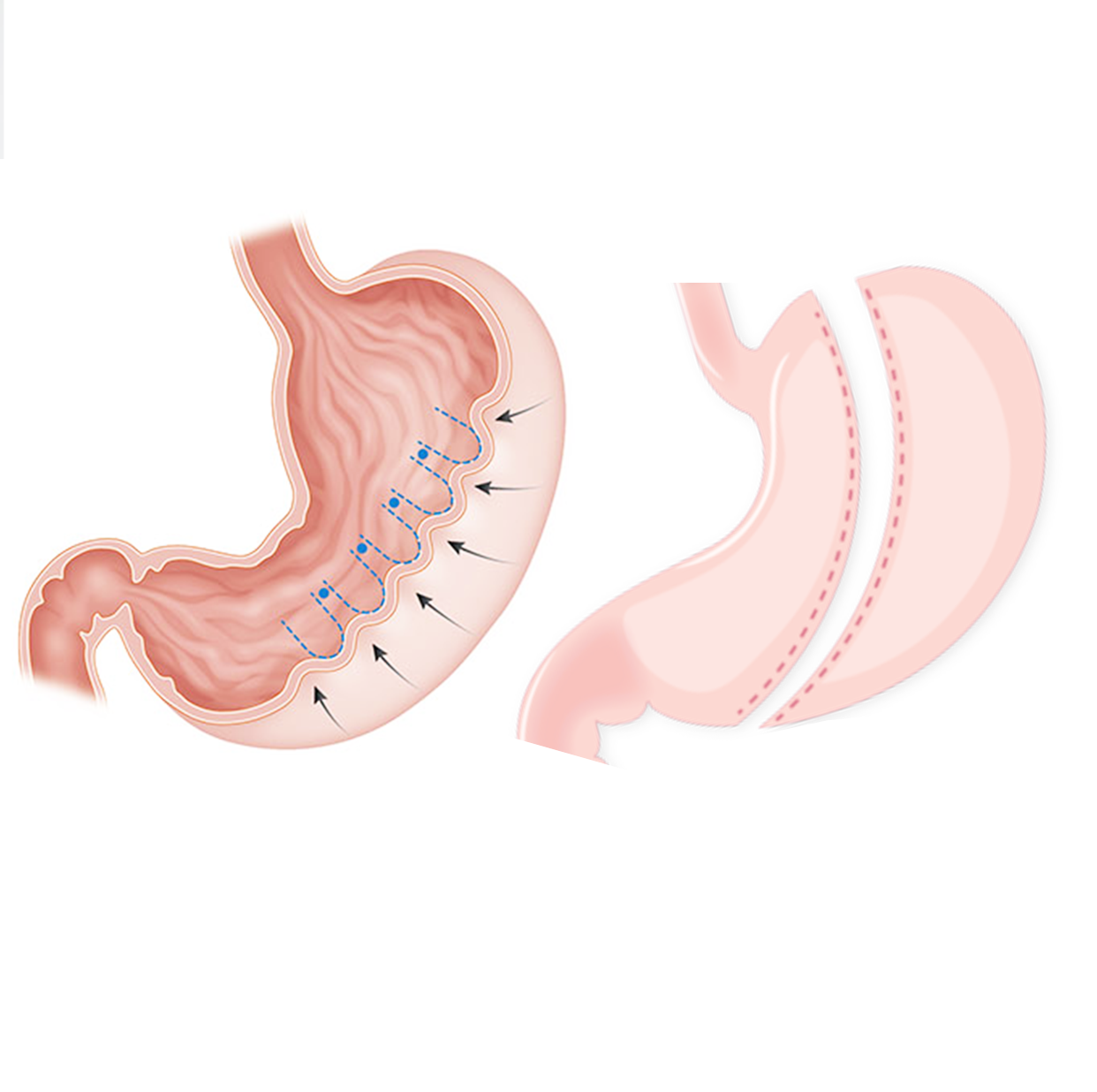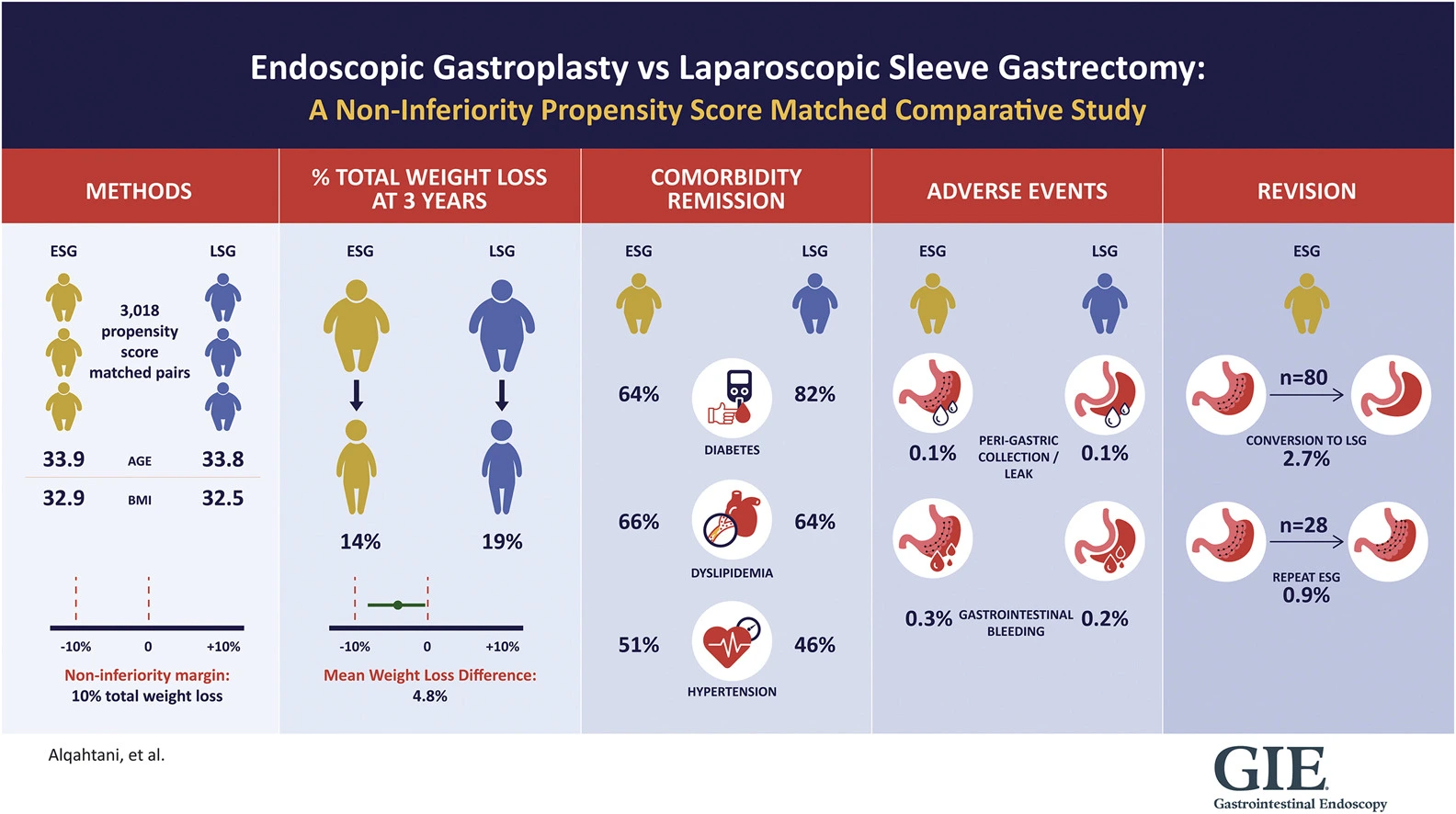
Background and Aims
Endoscopic bariatric therapies are less-invasive alternatives to bariatric surgery, and endoscopic gastroplasty (ESG) represents the latest evolution. This study aims to compare weight loss, safety, and comorbidity resolution of ESG compared with laparoscopic sleeve gastrectomy (LSG).
Methods
This was a propensity score–matched study of patients who underwent ESG or LSG. Primary outcome was weight loss at 6, 12, 24, and 36 months. A noninferiority margin of 10% total weight loss (%TWL) was used. Secondary outcomes were safety and comorbidity resolution.
Results
A 1:1 propensity score match yielded 3018 patient pairs. Average age and body mass index (BMI) were 34 ± 10 years and 33 ± 3 kg/m2, respectively, and 89% were women. Mean percentage of excess weight loss at 1, 2, and 3 years after ESG was 77.1% ± 24.6%, 75.2% ± 47.9%, and 59.7% ± 57.1%, respectively. Mean percentage of excess weight loss at 1, 2, and 3 years after LSG was 95.1% ± 20.5%, 93.6% ± 31.3%, and 74.3% ± 35.2%, respectively. The mean difference in %TWL was 9.7% (95% confidence interval [CI], 6.9-11.8; P < .001), 6.0% (95% CI, –2.0 to 9.4; P < .001), and 4.8% (95% CI, –1.5 to 8.7; P < .001) at 1, 2, and 3 years, respectively. Noninferiority was demonstrated at all follow-up visits. Fourteen ESG patients developed adverse events (.5%) versus 10 LSG patients (.3%). Comorbidity remission rates after ESG versus LSG were 64% versus 82% for diabetes, 66% versus 64% for dyslipidemia, and 51% versus 46% for hypertension, respectively. Eighty ESG patients (2.7%) underwent revision to LSG for insufficient weight loss or weight regain, and 28 had resuturing after primary ESG (.9%).
Conclusions
ESG induces noninferior weight loss to LSG with similar comorbidity resolution and safety profiles.
References:
The study was published in (GIE. Gastrointestinal Endoscopy)


